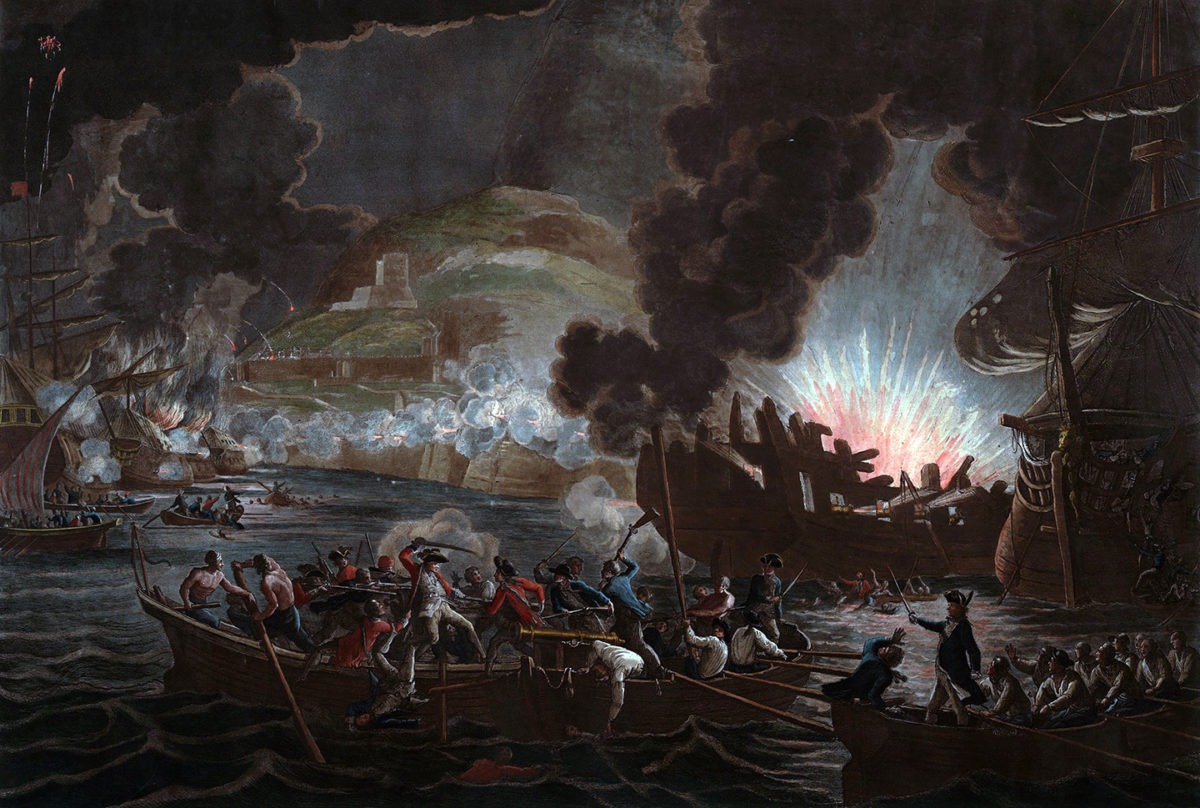The largest battle of the American Revolution happened a year after the British surrender at Yorktown. It featured more soldiers than fielded by the entire Continental Army, though it was fought in Europe and didn’t involve a single American soldier. Yet the outcome of the war and the future of America hinged on the result.
When the British colonies in North America declared independence in 1776, Britain’s European rivals flocked to the Patriot cause. The French, Dutch and Spanish had each been beaten badly by the British Empire in the previous century and saw in the distant revolution an opportunity to strike back and reclaim what they lost. For Spain that prize was Gibraltar, taken from them in 1704.
The British garrison at Gibraltar had fewer than 6,000 men when Spain began the siege in 1779, and prospects of reinforcement looked bleak given the combined Franco-Spanish navy surrounding them. Yet fortifications carved into the Rock of Gibraltar gave the British every possible defensive advantage. Meanwhile, several daring naval resupply missions spared the garrison from starvation, while regular sorties foiled the besiegers’ assault plans time and again.
By 1782 the British had lost their war with the colonies, the French were bankrupted, and the Americans needed a peace treaty to recognize their sovereignty. Everyone was ready to negotiate. Three years passed, but Spain remained adamant — no Gibraltar, no peace. Reluctantly, the French agreed to one final push. More than 70,000 men were assembled for the “Grand Assault,” supported by enormous “floating batteries” of cannons intended to reduce Gibraltar to rubble.
A comedy of errors stymied the “Grand Assault.” First, in a flaming instant the Spanish gunboats began to explode, one by one. They had sailed too close to the British guns, and rounds fired from Gibraltar ignited the huge gunpowder stockpiles aboard. Flames spread from ship to ship, clogging the harbor with wreckage and escaping sailors. Meanwhile, the cannons on land ran out of powder long before they could pound any holes in Gibraltar’s walls, rendering any ground assault moot.
The blunder at Gibraltar would cost the allied forces dearly in the 1784 Treaty of Paris. Britain managed to retain Canadian land it had agreed to cede to the United States when the war looked bleakest after Yorktown in 1781, and the Americans were forced to pay off their prewar debt to Britain. But the biggest loser was undoubtedly Spain. Gibraltar remains British to this day.
historynet magazines
Our 9 best-selling history titles feature in-depth storytelling and iconic imagery to engage and inform on the people, the wars, and the events that shaped America and the world.


